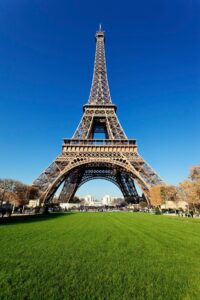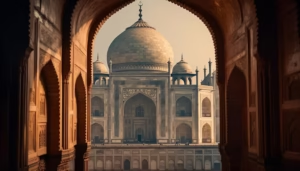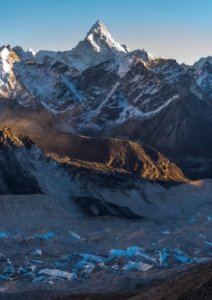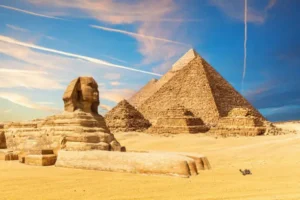Introduction to World Famous Swiss Landmarks
The world is filled with breathtaking famous swiss landmarks that stand as testament to human creativity, engineering prowess, and the stunning beauty of nature. From towering structures that touch the clouds to ancient ruins that have withstood thousands of years, these famous places attract millions of visitors annually who seek to experience their majesty firsthand.
Whether you’re planning your next adventure or simply exploring from home, this comprehensive guide will take you on a journey through the most recognizable swiss famous landmarks across every continent. We’ll explore not just their visual splendor, but also their historical significance, cultural importance, and practical tips for visitors.
The Most Famous Swiss Landmarks in the World
Iconic Architectural Wonders
1. The Eiffel Tower – Paris, France
Standing proudly at 1,083 feet, the Eiffel Tower has become synonymous with Paris and French culture. Originally built as a temporary structure for the 1889 World’s Fair, this iron lattice masterpiece was designed by Gustave Eiffel and now welcomes over 7 million visitors annually. Its distinctive silhouette illuminates the Parisian skyline each night with a dazzling light show that begins on the hour.
The tower offers three visitor levels, with the summit providing panoramic views extending up to 45 miles on clear days. Beyond its architectural significance, the Eiffel Tower has featured prominently in countless films, photographs, and artwork, cementing its status as perhaps the world’s most recognizable famous landmark.

2. The Colosseum – Rome, Italy
This magnificent amphitheater in the heart of Rome stands as the largest ancient amphitheater ever built. Completed in 80 CE, the Colosseum could host up to 80,000 spectators who gathered to watch gladiatorial contests, animal hunts, executions, and dramatic performances.
Despite suffering damage from earthquakes and stone robbers over the centuries, the Colosseum remains remarkably intact and continues to be a powerful symbol of Imperial Rome’s engineering ingenuity and cultural practices. Today, it’s one of Italy’s most visited attractions, drawing over 7 million tourists annually who come to walk in the footsteps of ancient Romans.

3. The Taj Mahal – Agra, India
This gleaming white marble mausoleum represents the pinnacle of Mughal architecture and stands as an enduring symbol of eternal love. Built between 1632 and 1653 by Emperor Shah Jahan to honor his favorite wife Mumtaz Mahal, the Taj Mahal combines elements of Islamic, Persian, Ottoman Turkish, and Indian architectural styles.
The perfect symmetry, the delicate inlay work, and the surrounding gardens create an atmosphere of serene beauty. The main building changes appearance throughout the day as sunlight plays across its surface, appearing pinkish in the morning, white at noon, and golden in the moonlight. This UNESCO World Heritage site attracts 7-8 million visitors yearly.

Natural Famous Swiss Landmarks of the World
4. The Grand Canyon – Arizona, USA
Carved by the Colorado River over millions of years, the Grand Canyon stretches 277 miles long, up to 18 miles wide, and reaches depths of over a mile. This geographical landmark displays two billion years of Earth’s geological history in its exposed layers.
The canyon’s dramatic landscapes change constantly with the light, creating a living canvas of reds, oranges, and purples. Visitors can experience the canyon through various viewpoints along the North and South Rims, hiking trails that descend into the canyon, or rafting expeditions on the Colorado River. The Grand Canyon National Park welcomes approximately 6 million visitors each year.
5. Mount Everest – Nepal/Tibet
As the world’s highest peak at 29,032 feet above sea level, Mount Everest represents the ultimate challenge for mountaineers and a symbol of nature’s grandeur. Part of the Himalayan mountain range, Everest (known locally as Sagarmatha in Nepal and Chomolungma in Tibet) has a mystical quality that has drawn adventurers since the first successful summit by Edmund Hillary and Tenzing Norgay in 1953.
Even for those who don’t attempt the summit, Everest Base Camp treks offer spectacular views of this magnificent mountain and the surrounding peaks. The mountain’s cultural significance to local Sherpa communities adds another dimension to its importance as a landmark.

6. Northern Lights (Aurora Borealis) – Arctic Circle
Unlike fixed landmarks, this natural phenomenon creates colorful light displays in the night sky near the Earth’s poles. The Northern Lights occur when charged particles from the sun collide with atmospheric gases, producing vibrant curtains of green, blue, pink, and purple light that dance across the polar skies.
Prime viewing locations include northern Scandinavia (particularly Tromsø, Norway), Iceland, Alaska, northern Canada, and parts of Russia. This breathtaking spectacle has inspired folklore and mythology across many cultures and continues to draw travelers who brave sub-zero temperatures for a chance to witness one of nature’s most magnificent displays.

Famous Historical Landmarks
7. The Great Wall of China – China
Stretching approximately 13,170 miles across northern China, the Great Wall represents one of humanity’s most ambitious building projects. Construction began in the 7th century BCE and continued for over 2,000 years across multiple dynasties, with the most well-preserved sections dating from the Ming Dynasty (1368-1644).
Originally built for defense against nomadic invasions, the wall traverses diverse landscapes including mountains, deserts, and grasslands. The Mutianyu and Badaling sections near Beijing are particularly popular with tourists, offering restored walkways with spectacular views. Beyond its physical presence, the Great Wall symbolizes Chinese civilization’s perseverance and engineering capabilities.

8. Machu Picchu – Peru
This 15th-century Inca citadel perched high in the Andes Mountains was unknown to the outside world until American explorer Hiram Bingham brought it to international attention in 1911. Built around 1450 at an elevation of 7,970 feet, Machu Picchu features over 200 structures arranged in harmony with the mountainous landscape.
The site’s precise stone masonry, ingenious water management systems, and astronomical alignments demonstrate the Incas’ advanced engineering skills. The purpose of this remote city remains somewhat mysterious, though it likely served as a royal estate or religious retreat. Now Peru’s most visited tourist destination, Machu Picchu offers visitors a profound connection to pre-Columbian America.

9. Pyramids of Giza – Egypt
The only surviving structure of the Seven Wonders of the Ancient World, the Great Pyramid and its companions have fascinated humanity for millennia. Built during Egypt’s Fourth Dynasty (circa 2580-2560 BCE), the Great Pyramid of Khufu originally stood 481 feet tall and remained the world’s tallest human-made structure for nearly 4,000 years.
The precision of the pyramids’ construction—with blocks weighing up to 80 tons placed with remarkable accuracy—continues to impress modern engineers. The complex also includes the enigmatic Great Sphinx, with its lion’s body and human head. These monuments on the outskirts of Cairo serve as enduring symbols of ancient Egyptian civilization and attract millions of visitors annually.

Modern Worldwide Monuments
10. Sydney Opera House – Australia
With its distinctive sail-shaped shells, the Sydney Opera House has become Australia’s most recognizable building and a masterpiece of 20th-century architecture. Designed by Danish architect Jørn Utzon and completed in 1973, this performing arts center sits majestically on Sydney Harbour.
The complex houses multiple performance venues that host over 1,500 performances annually, from opera and symphony concerts to contemporary music and theater. Beyond its cultural significance, the Opera House’s innovative design pushed the boundaries of architectural and engineering possibility. It was designated a UNESCO World Heritage site in 2007, recognizing its influence on architectural history.
11. Burj Khalifa – Dubai, UAE
Soaring 2,717 feet into the sky, the Burj Khalifa currently holds the title of the world’s tallest building. Completed in 2010, this neo-futurist skyscraper has redefined urban possibilities and stands as a symbol of Dubai’s rapid transformation from desert outpost to global metropolis.
The building’s design draws inspiration from Islamic architecture and desert flowers while incorporating cutting-edge technology to withstand high winds and desert conditions. Visitors can experience breathtaking views from observation decks on the 124th, 125th, and 148th floors. The Burj Khalifa has set numerous records beyond height, including the highest outdoor observation deck and elevator with the longest travel distance.
12. Statue of Liberty – New York, USA
This colossal neoclassical sculpture on Liberty Island in New York Harbor has welcomed immigrants to America since 1886. A gift from France to commemorate the centennial of American independence, the copper statue designed by Frédéric Auguste Bartholdi stands 305 feet tall from ground to torch.
Lady Liberty’s broken chains and illuminating torch symbolize freedom and enlightenment, making her one of the world’s most meaningful landmarks. Beyond her artistic and engineering significance, the statue has taken on profound cultural importance as a symbol of hope and opportunity for generations of immigrants and visitors to the United States.
Popular Landmarks by Continent
Europe’s Greatest Landmarks
Europe boasts an unparalleled concentration of historical and cultural landmarks, reflecting its complex history and artistic heritage. Beyond those already mentioned, noteworthy European landmarks include:
- The Acropolis (Athens, Greece) – Ancient citadel featuring the Parthenon temple
- Sagrada Família (Barcelona, Spain) – Antoni Gaudí’s unfinished masterpiece of modernist architecture
- Stonehenge (Wiltshire, England) – Prehistoric monument of massive standing stones
- Neuschwanstein Castle (Bavaria, Germany) – Fairy tale castle that inspired Disney
- Leaning Tower of Pisa (Pisa, Italy) – Famous for its unintended tilt
- The Louvre (Paris, France) – World’s largest art museum housed in a historic palace
Asia’s Iconic Places
Asia’s landmarks reflect diverse cultural traditions and span thousands of years of history:
- Angkor Wat (Cambodia) – Largest religious monument in the world
- Mount Fuji (Japan) – Sacred volcano that has inspired artists for centuries
- Petra (Jordan) – Ancient city carved into rose-colored rock
- Bagan Temples (Myanmar) – Plain containing over 2,000 Buddhist monuments
- Forbidden City (Beijing, China) – Imperial palace complex of the Ming and Qing dynasties
- Borobudur (Indonesia) – World’s largest Buddhist temple
Famous Landmarks Places in the Americas
The Americas feature both ancient indigenous monuments and modern marvels:
- Statue of Christ the Redeemer (Rio de Janeiro, Brazil) – Art Deco statue overlooking the city
- Chichen Itza (Mexico) – Major pre-Columbian Mayan city
- Golden Gate Bridge (San Francisco, USA) – Iconic suspension bridge
- Easter Island Moai (Chile) – Monolithic human figures carved by the Rapa Nui people
- Niagara Falls (Canada/USA) – Spectacular group of three waterfalls
- Empire State Building (New York, USA) – Historic 102-story skyscraper
Africa’s Notable Landmarks
Africa’s landmarks showcase both natural wonders and human achievements:
- Victoria Falls (Zimbabwe/Zambia) – One of the world’s largest waterfalls
- Mount Kilimanjaro (Tanzania) – Africa’s highest mountain
- Djenne Mosque (Mali) – Largest mud-brick building in the world
- Table Mountain (Cape Town, South Africa) – Flat-topped mountain overlooking the city
- Avenue of the Baobabs (Madagascar) – Famous group of ancient baobab trees
- Great Zimbabwe (Zimbabwe) – Medieval stone city ruins
Oceania’s Spectacular Sites
Beyond the Sydney Opera House, Oceania offers unique landmarks:
- Uluru/Ayers Rock (Australia) – Sacred sandstone monolith in the Outback
- Milford Sound (New Zealand) – Dramatic fjord in South Island
- Great Barrier Reef (Australia) – World’s largest coral reef system
- Moeraki Boulders (New Zealand) – Spherical boulders on Koekohe Beach
- Nan Madol (Micronesia) – Ancient city built on artificial islands
Visiting World Swiss Landmarks: Practical Tips
Best Times to Visit Popular Landmarks
To maximize your experience at these famous places, timing is crucial:
- Peak vs. Off-Season: While summer offers extended daylight hours at many northern hemisphere sites, winter visits often mean fewer crowds and lower prices.
- Weather Considerations: Research climate patterns—monsoon seasons can obscure views at Asian landmarks, while extreme heat makes Middle Eastern sites uncomfortable in summer.
- Special Events: Some landmarks host illumination shows (like the Eiffel Tower) or cultural performances that enhance visits but require advance planning.
- Time of Day: Early morning typically offers the best combination of light and minimal crowds at most outdoor landmarks.
Conservation Challenges on swiss landmarks
Many world landmarks face preservation challenges:
- Overtourism: Sites like Machu Picchu have implemented visitor restrictions to prevent degradation.
- Climate Change: Rising sea levels threaten coastal landmarks, while changing weather patterns accelerate erosion at others.
- Air Pollution: Acid rain damages stone monuments, while air pollution discolors facades.
- Development Pressure: Urban growth encroaches on the settings of many historical landmarks.
By understanding these challenges, visitors can make responsible choices that help protect these treasures for future generations.
Conclusion: The Enduring Appeal of Famous Landmarks
The world’s most recognizable landmarks continue to captivate us because they speak to something fundamental in the human experience. Whether gazing up at the Eiffel Tower, standing before the ancient stones of Machu Picchu, or witnessing the natural splendor of the Grand Canyon, these famous places connect us to our shared history, artistic achievements, and the awe-inspiring power of nature.
These landmarks transcend their physical presence to become symbols of cultural identity, human ingenuity, and our capacity for creating beauty. They serve as bridges between past and present, reminding us of both how far we’ve come and the foundations upon which our modern world is built.
As you plan your own explorations, remember that these landmarks offer more than photo opportunities—they provide windows into diverse cultures, technological innovations, and the remarkable story of human civilization. Whether you visit one or many in your lifetime, each famous landmark offers a unique perspective on our world and its wonders.
This comprehensive guide to famous landmarks and places in the world was last updated on April 29, 2025. Information about visiting hours, ticket prices, and specific access requirements for individual landmarks may change, so always check official websites before planning your visit.











